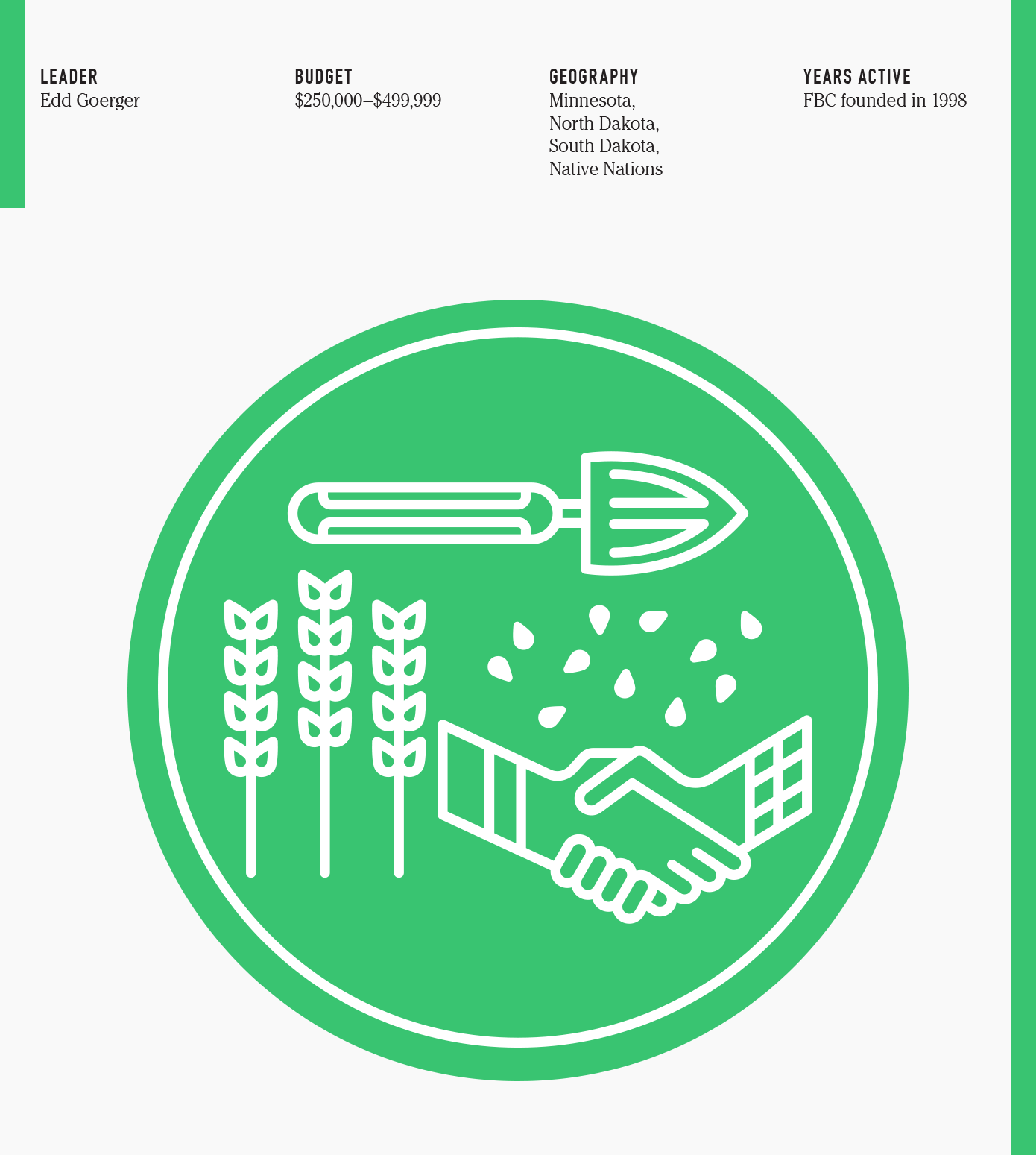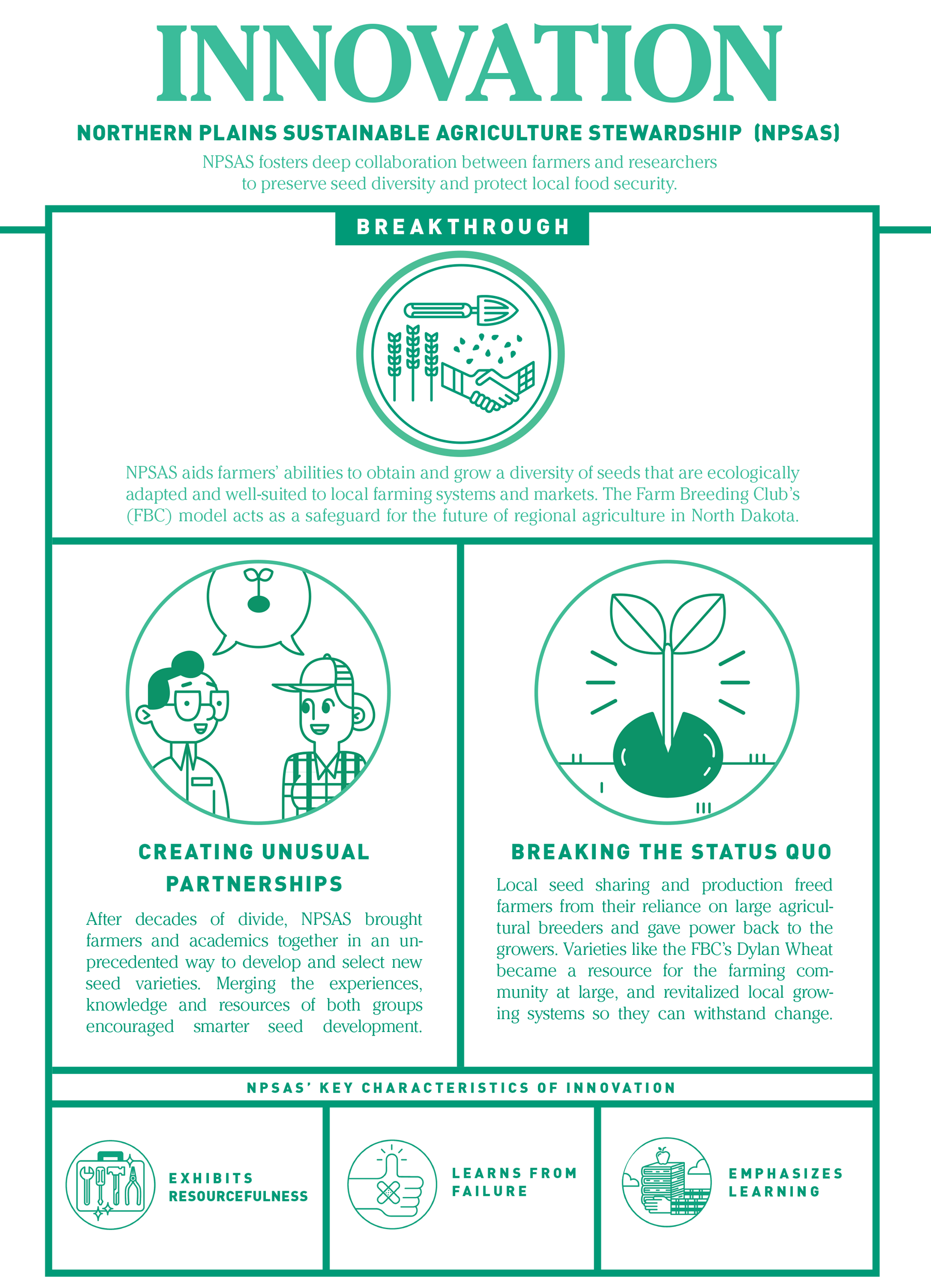
Three times a day most of us pause to do one thing: eat. There’s breakfast, lunch and dinner. Maybe there’s a snack in between. How often do we pause to consider where our meals come from? What about that tiny seed that starts it all? Many Midwesterners see farmers, or at least their land, every day. They drive past grazing cows, majestic hay bales lined up in fields or the green beginnings of corn stalks springing up from the ground. But they don’t see a farmer’s relationship to his or her seeds.


Silence. That’s what you typically hear from farmers these days if you ask whether they breed the seeds they plant. However, that was not always the case. For thousands of years, farmers acted as primary seed breeders, developing new varieties of seeds to best match the unique traits of their fields. But as scientists and private companies came to dominate seed breeding, farmers became buyers instead of contributors. NPSAS started the Farm Breeding Club (FBC) to reverse that trend. Edd Goerger, the executive director of the FBC, champions an organic approach to food production that closely knits farmers with their land. “It’s a good forethought to preserve seeds as much as you can. Those of us who are doing this feel like we’re being responsible for future generations and taking responsibility for our occupation.”
 or the past few decades, massive commercial farming operations have come to dominate seed breeding culture, all but pushing smaller farmers out of the way. NPSAS decided to help farmers push back. In 1998, it formed FBC, a grassroots organization created to give organic farmers a voice and support those who sought to create and share new varieties of seeds developed from their experience.
or the past few decades, massive commercial farming operations have come to dominate seed breeding culture, all but pushing smaller farmers out of the way. NPSAS decided to help farmers push back. In 1998, it formed FBC, a grassroots organization created to give organic farmers a voice and support those who sought to create and share new varieties of seeds developed from their experience.
Steve Zwinger, an FBC member and researcher at North Dakota State University, thinks seeds are pretty powerful. All Steve ever wanted to do was farm, and for the past 50 years that’s what he has done. But the land he farms is changing. Patches of white mar the surface, evidence of soil devastated by salt and where traditional seeds refuse to grow. The solution to regional growing challenges like this might be in the development of alternative seeds, such as the ancient wheat varieties the FBC grows. In preliminary tests, these varieties showed a high salt tolerance and managed to grow despite drought.
For the FBC, the first step toward healthy soil and crops begins by opening up the lines of communication between farmers and scientists developing organic seeds—two groups that have traditionally not collaborated. “It’s about making events where people can talk about what’s going on in their industry,” says Edd. It all comes down to creating opportunities where the partners can exchange ideas and not feel threatened or obligated one way or the other.”

The FBC expects its 50 members to share more than just their opinions. They started the Grants to Grow project, a micro-grant system to support members who want to tackle their own seed projects. Between 2011 and 2013, the Grant to Grow Seed Initiative invested more than $130,000 to support farmers working to improve or develop new seeds like broccoli, green beans, heritage wheat, popcorn and tomatoes that thrive in organic systems.
“As farmers it is our right and responsibility to save and develop seeds, and carry on the genetic resources of our farms,” Steve says. By reviving an old tradition of seed saving on farms, the FBC encourages more farmers to learn about public plant
breeding. By funding the development of regionally adapted seed varieties, the FBC gives farmers a place in an arena where they were previously shut out.

 lowly NPSAS is laying new inroads between scientists and farmers. Through participatory plant breeding, a new model brings the experiences of both groups together, encouraging smarter seed development.
lowly NPSAS is laying new inroads between scientists and farmers. Through participatory plant breeding, a new model brings the experiences of both groups together, encouraging smarter seed development.
“You can sit in your research plots and come up with something you think works well, but until you take it to the field you don’t know,” says Steve. “It can change.” Tired of being shut out, a group of farmers spoke up at the NPSAS annual forum. They felt frustrated that they couldn’t access certain organic varieties of seeds and knew little information on how these seeds performed in the field. Steve was one of several researchers at that meeting. When the farmers asked for help, he decided to answer.
“The farmers saw value in the seed they were growing,” Steve says. “Seed is the most fundamental thing on your farm. It’s the first decision you make that will have the largest impact on your production.” Steve cares about seeds, too, especially when it comes to developing regional varieties for organic farmers. He wants to invite growers back into the breeding process, even though other scientists from his research institute doubt the merits of his approach.
Steve found his chance with Dylan wheat, a new variety of spring wheat the club released publicly in 2007. Soon after, a plant breeder gifted a handful of seeds to the club but it wasn’t enough for a farmer to plant in the field. So Steve took the seeds and tested them in small plots. The seed quickly proved its worth as tolerant to drought and fusarium, a fungal disease. Then Steve turned to farmers for help. They planted Dylan wheat seeds in their fields and generated enough volume to release and sell the new variety publicly. Steve’s colleagues saw the benefits of a collaborative practice, and the team’s momentum built.

North Dakota is a state that relies on the land. Healthy soil builds healthy communities and, for the FBC, that starts with seeds. The FBC believes in sharing seed genetics to remove barriers to farming and plant development. It’s a radical idea and a major departure from large, commercial seed breeders that promote tight corporate control and patenting of genetic material.
When the FBC released its Dylan wheat in 2007, the group made it available to the public. No owners. No patents. No rules to return leftover seed back to sellers at the end of the season. The Dylan wheat became a resource for the agricultural community at large. Seed sharing frees farmers from dependence on large seed companies and lets growers generate new ideas to cultivate new crop varieties or seed traits that work best for their land.
Large companies make their money developing general seeds for farmers to use across the country, but bringing growers back into the fold reintroduces a level of specificity missing from the process.
When farmers develop seeds where they’re grown, they can pinpoint specific regional challenges like disease or weather. In response, they can then develop seed lines that combat those concerns and create a more effective solution for their communities.



Produced in partnership with the Bush Foundation
to showcase the culture of innovation
behind its Bush Prize winners.
Contributors




